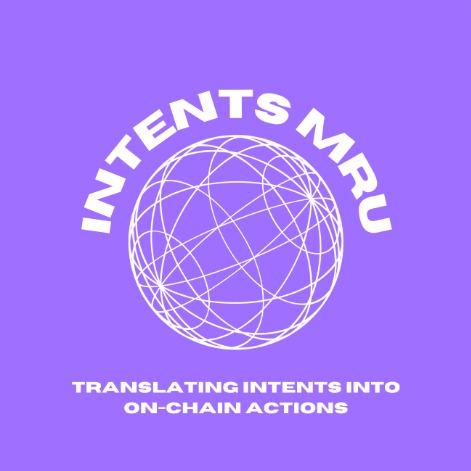Intents MRU
Translating intents into on-chain actions. Briging the power of blockchain with natural language interactions, enabled by Intents-MRU's decentralized solver
Created on 31st March 2024
•
Intents MRU
Translating intents into on-chain actions. Briging the power of blockchain with natural language interactions, enabled by Intents-MRU's decentralized solver
The problem Intents MRU solves
There's a very high barrier to entry for non-technical users due to the complexity of interacting with smart contracts.
Currently, engaging with dApps and executing on-chain transactions requires a deep understanding of blockchain technology, smart contract interfaces, and the ability to construct complex transaction data.
With Intents-MRU, users can seamlessly interact with blockchain protocols and dApps without needing to understand the intricacies of smart contract execution. The platform enables users to express their intentions or desired actions in natural language, effectively bridging the gap between human communication and the technical requirements of on-chain interactions.
This could also be potentially expanded with a telegream bot , where users could simply pass their intents as messages and bot can solve them by posting it to the MRU , and offering the solution to the user inside telegram itself.
Possible use cases:
DeFi Interactions: Express intentions like "swap 1 ETH for DAI" or "provide liquidity to Uniswap ETH-USDC pool," and let Intents-MRU handle the complex transaction details.
NFT Transactions: Simply state "mint NFT from CryptoPunks" or "list Bored Ape NFT on OpenSea," and the platform will execute the desired NFT actions seamlessly.
Decentralized Governance: Participate in on-chain governance by conveying "vote in favor of protocol upgrade proposal" or "delegate voting power," without needing technical expertise.
Wallet Management: Effortlessly manage your crypto assets by expressing intentions like "send 0.5 BTC to this address" or "stake MATIC tokens for yield."
Challenges we ran into
Front-end Challenges:
We wanted to make the UX for this project so smooth that anyone without extensive knowledge of blockchain and concepts revolving around it could use it. We spent a lot of time figuring out the best approach to solve this and ultimately settled on a conversational UI that mimics a single input interface. This allowed users to input their intents in a natural language format, making the experience intuitive and user-friendly.
However, translating the user's input into a format that could be processed by our backend solvers presented its own set of challenges. We had to implement natural language processing techniques to extract the relevant information from the user's input, such as the desired action, the target protocol, and any necessary parameters.
Another front-end challenge we faced was displaying the translated transaction data in a way that was easily understandable by the user. We had to strike a balance between providing enough information for the user to verify the transaction details while keeping the interface clean and uncluttered.
Backend Challenges:
On the back-end, one of the biggest challenges was designing and implementing the solver network. We had to create a decentralized and incentivized system where solvers could compete to provide the most accurate translations of user intents into executable transactions. This was solved by our MRU , which acted as the solver market which could manage the intent solving scalably, efficiently & also verifiably at the same point .
Integration Challenges:
Integrating with various blockchain protocols and decentralized applications was a non-trivial task. Each protocol and dApp has its own unique set of smart contracts, interfaces, and execution requirements , which was hard for us to decide on and integrate with out Natural language processing well.
Tracks Applied (2)
DeFi
Avail-powered Rollup
Avail Project
Cheer Project
Cheering for a project means supporting a project you like with as little as 0.0025 ETH. Right now, you can Cheer using ETH on Arbitrum, Optimism and Base.
